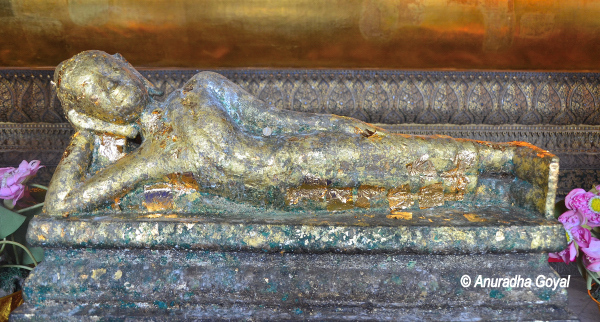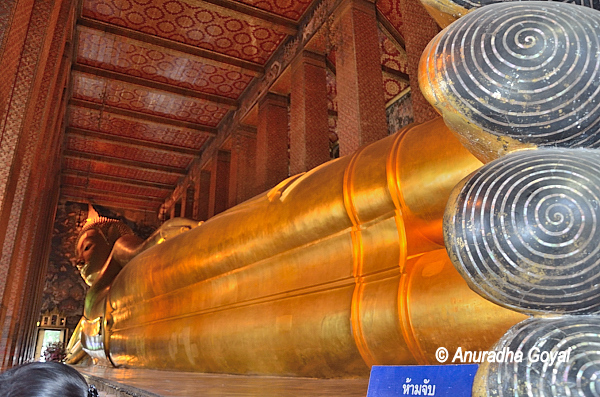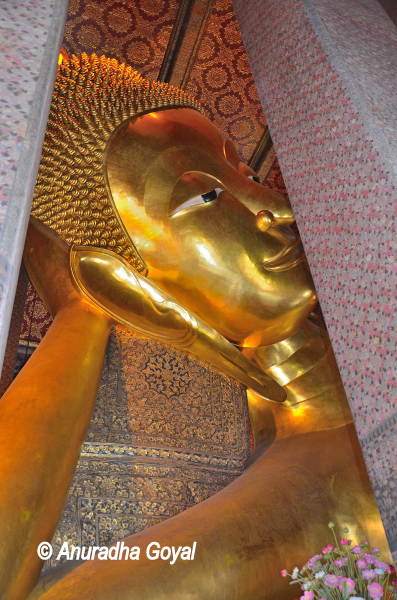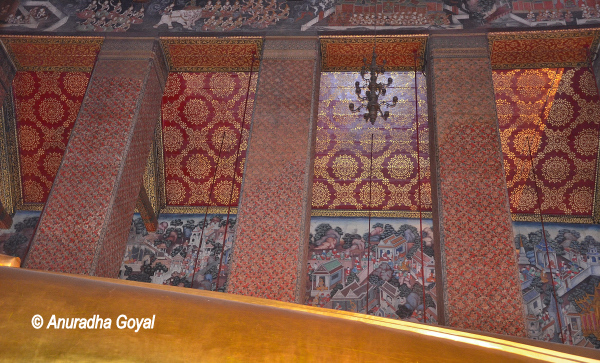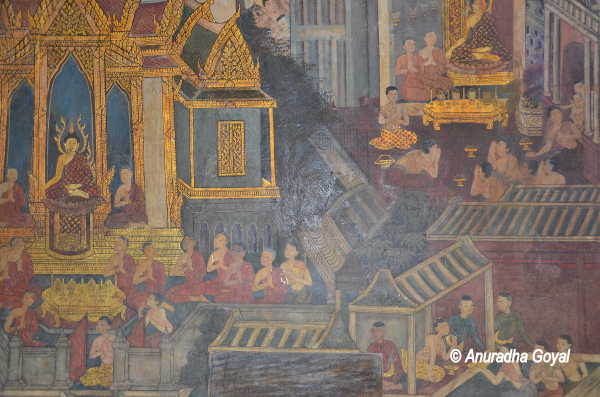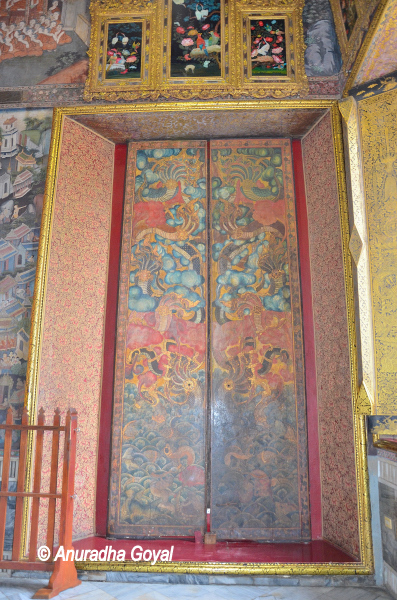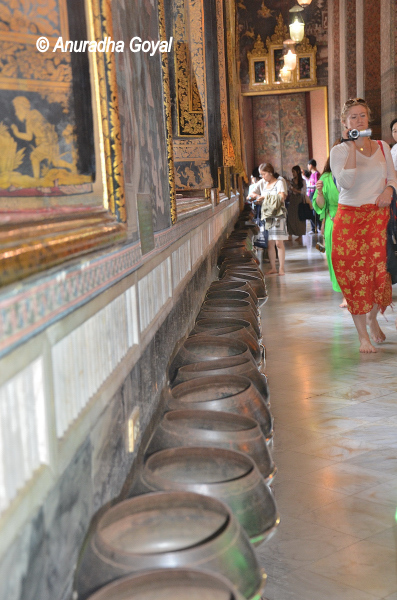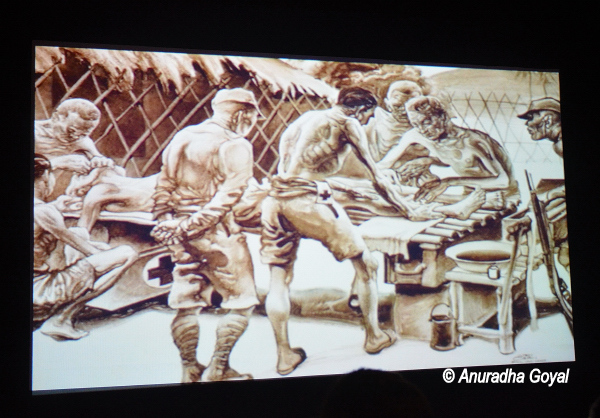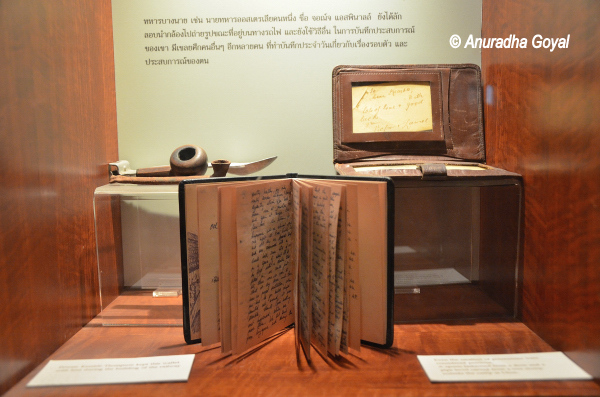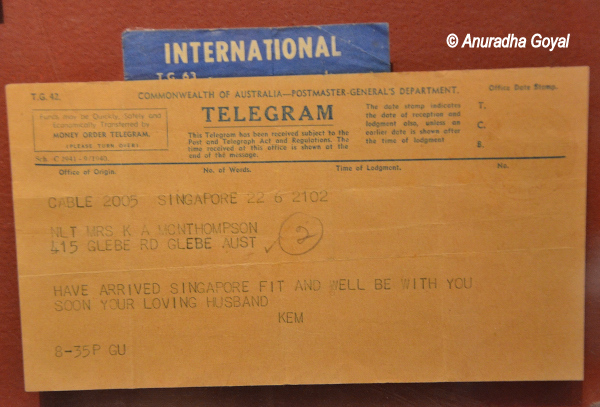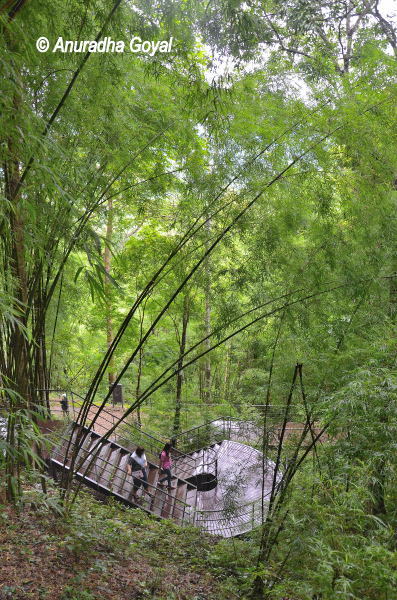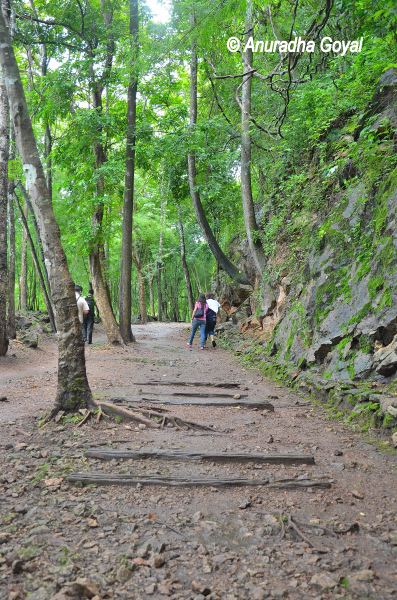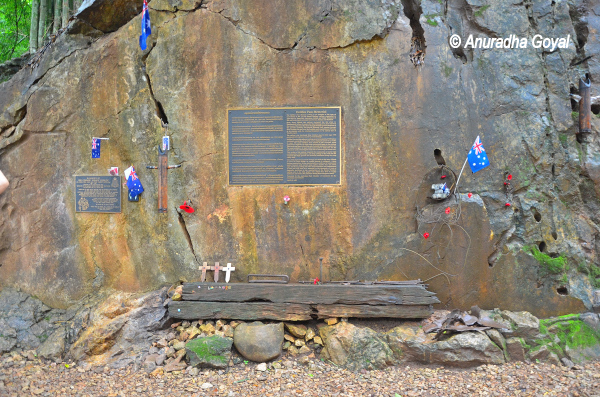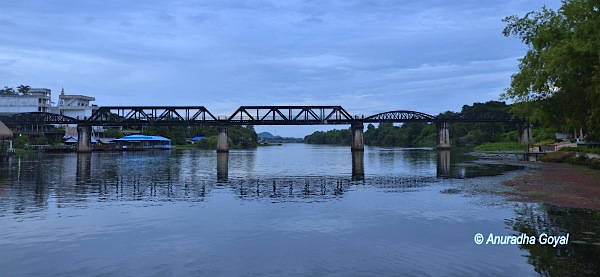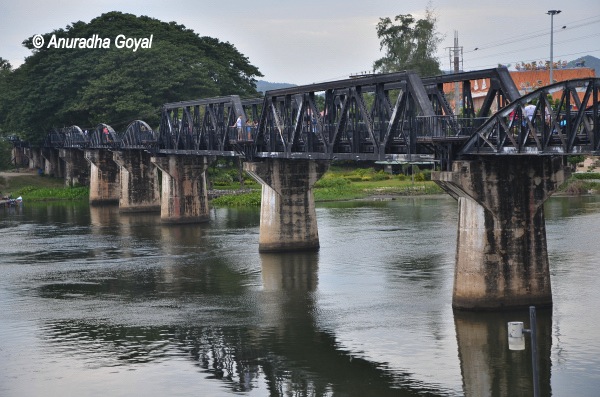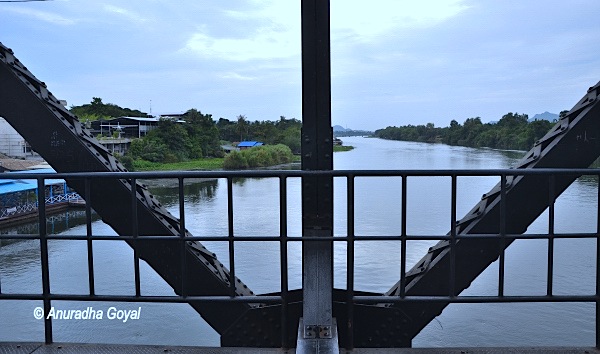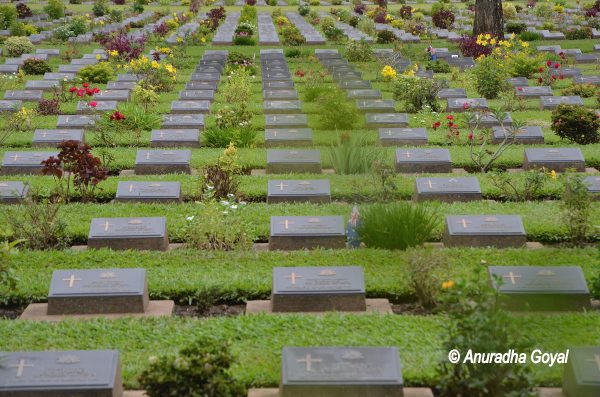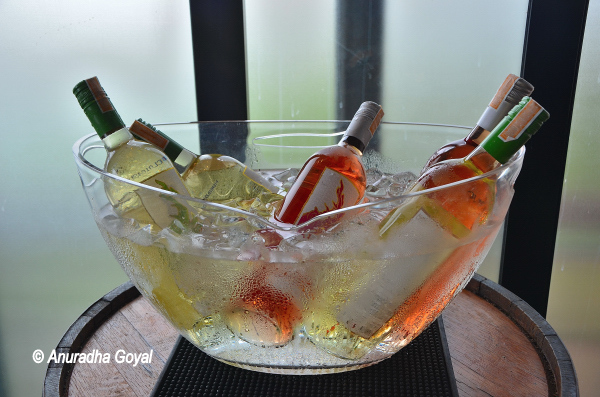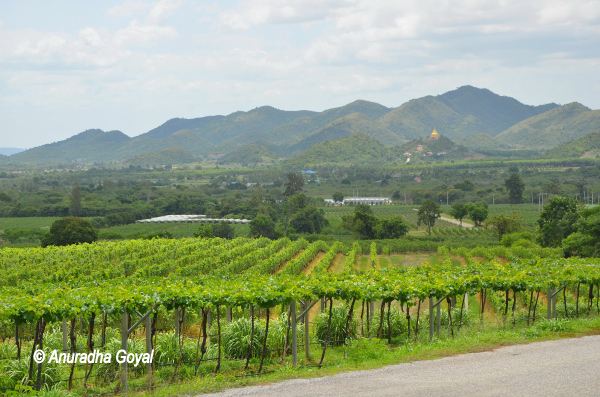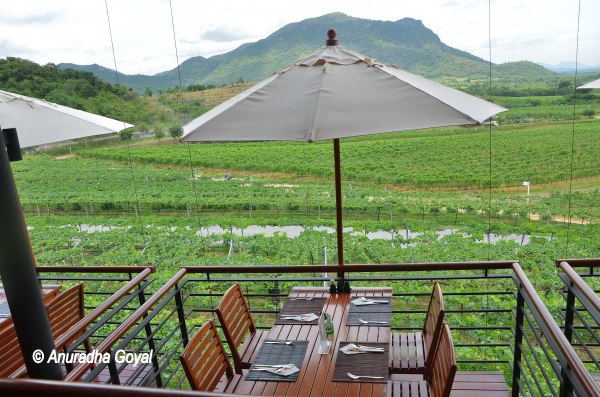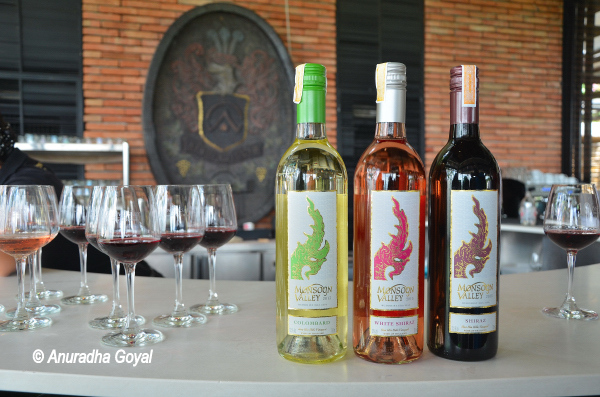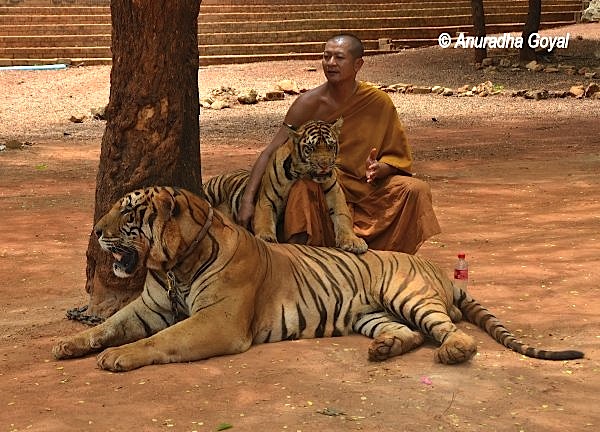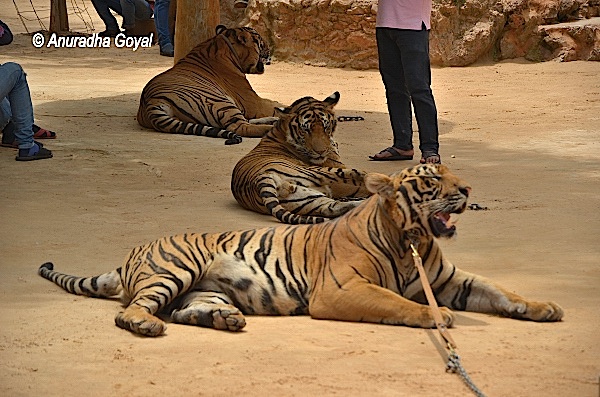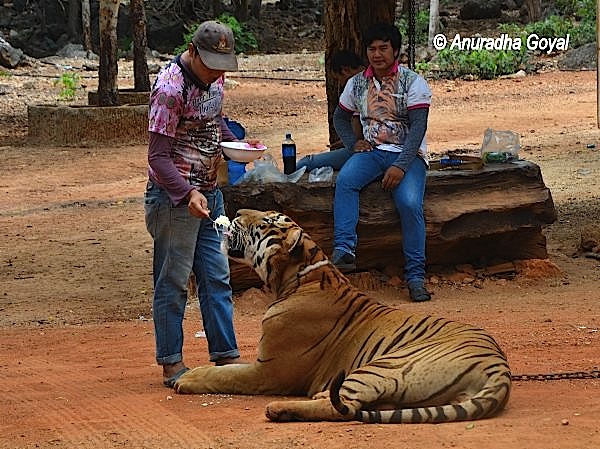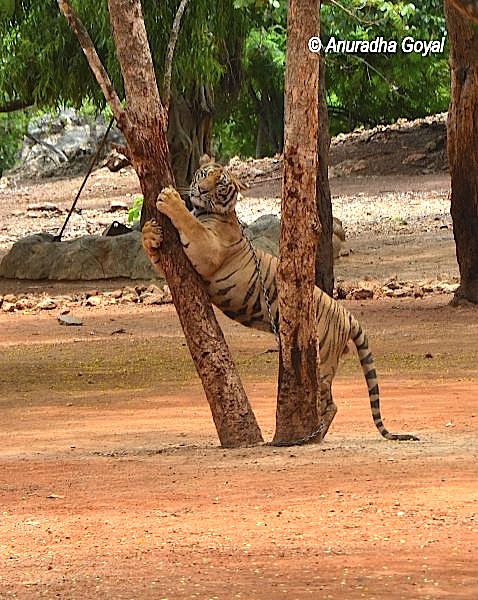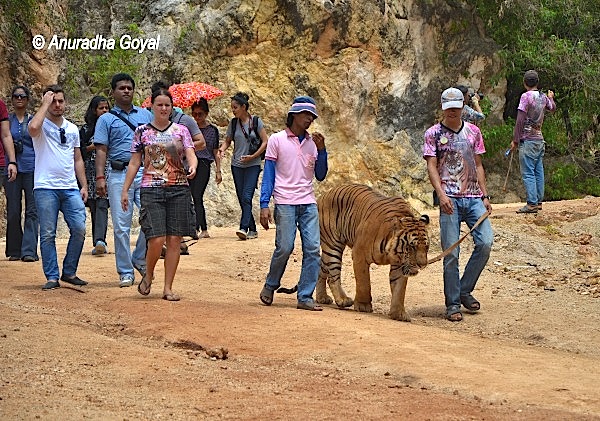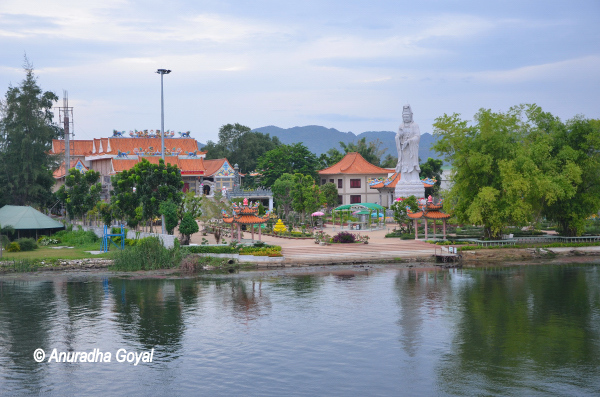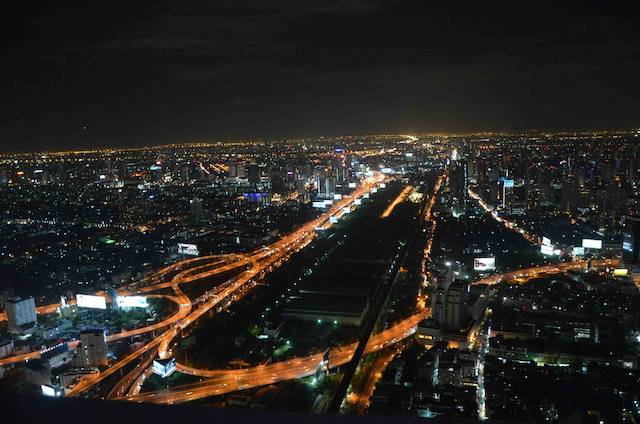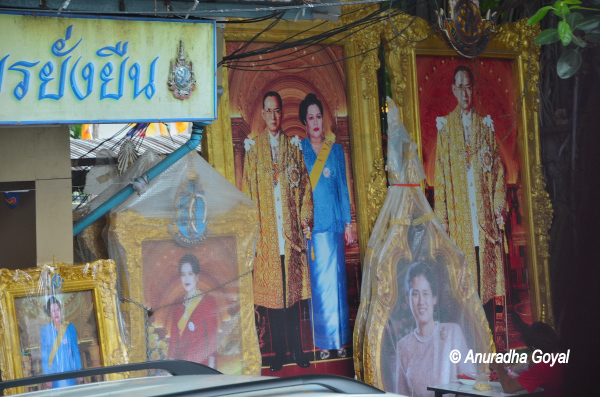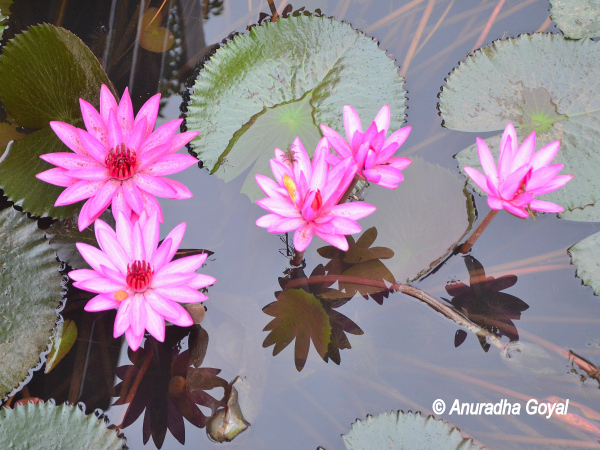
King of Thailand is called Rama - so its not surprising that the walls of the Royal Palace have murals depicting the story of Ramayana.

The palaces depicted are quite similar to the royal palace itself with with multiple buildings in a campus and lavish use of Gold. The backdrops depict the landscape of the country.

Rama is depicted in blue and you can identify him with his bow and arrow.

Look at the details of the Chariot in motion as the war is fought between Rama and Ravana. Look at the foot soldiers and how their garments make them stand out among the royal armies.

Vanar Sena or the army of monkeys fighting the army of Ravana - see the sharp contrast that the artist brings out between the two and the rocky landscape.

Another war scene with humans and monkeys fighting together.

Elephants and Chariots braving the rocks. Look at the generous use of gold to embellish a subdued landscape.

Hanuman and his magical tail playing games as rest of the armies fight.

Loved this depiction of Ravana in his golden court. The detailing of the court in dark grey and golden columns, garments is amazing.

Our guide told us that the figures sitting on the small mats are Rama and Sita and since it was painted after the war scene. I assume this is scene from Rameshwara on Rama's return from Lanka.

This is how the murals are depicted in a long corridor around the palace with bright red ceilings. Paintings are a continuos narrative without any explicit break between the scenes, assuming that the viewer is aware of the story and can relate the paintings to the scenes of Ramayana.
I wish I had more time and a guide to take me through the details of these paintings and the style of paintings.





